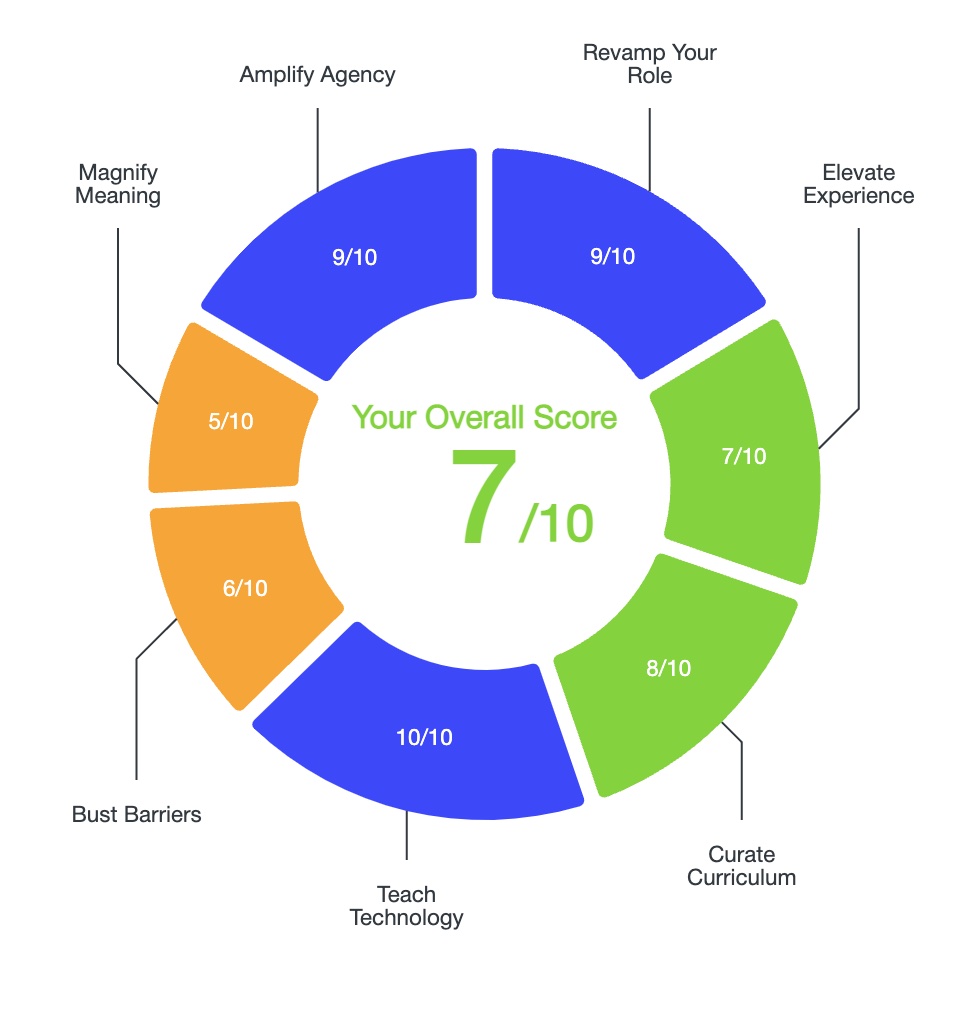A teacher’s main goal when using Google Classroom for remote teaching should be to create a well-organized digital classroom that students visit on a daily basis in order to find announcements and assignments.
Optimize your Google Classroom for online learning with these 10 tips.
1. Strategically Set Up Classrooms
When you first login to Google Classroom, you’ll be faced with an organizational decision. It might be helpful to think of this stage of organization like setting up different filing cabinets.
If you teach elementary school, it’s probably okay to just have one Google Classroom, or filing cabinet, for your entire class.
If, however, you teach multiple subjects, I recommend that you set up a different Google Classroom, or totally separate filing cabinets, for each subject. Keeping subjects separate will help ensure that your students are more easily able to locate what they need.
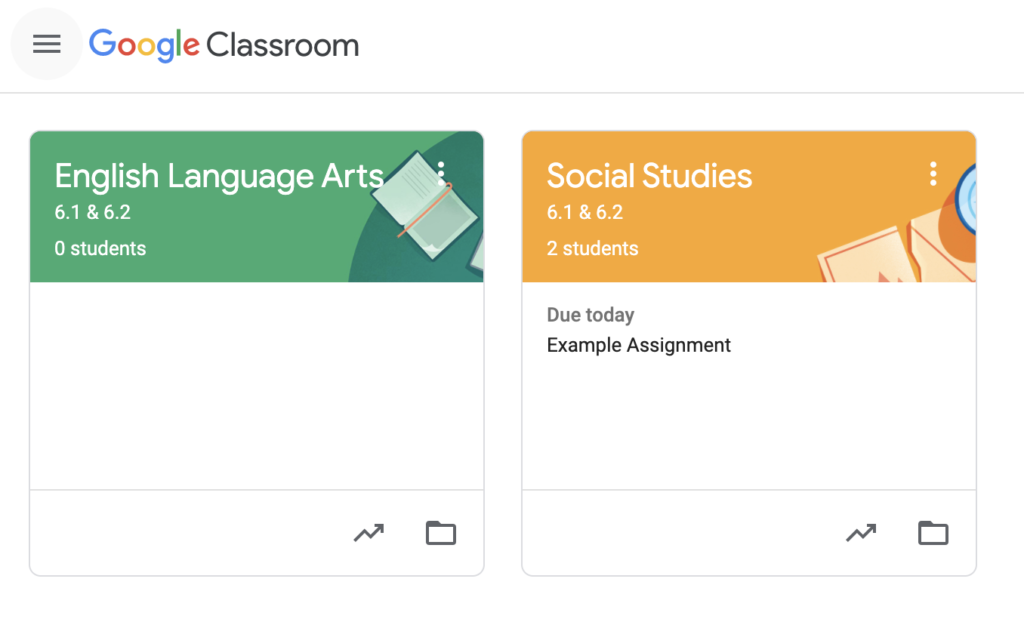
2. Streamline your Stream: No Classwork on the Stream & No Student Posts
If you leave the default settings on your Stream, it will soon fill up will a running list of announcements, assignments, and student posts, making it nearly unusable for students.
First, change the settings for Classwork on the Stream to “Hide Notifications” so that only your weekly/daily announcements show up, and not the assignments you post. This will help your Stream stay less cluttered, and will help students understand where to go to find announcements versus assignments.
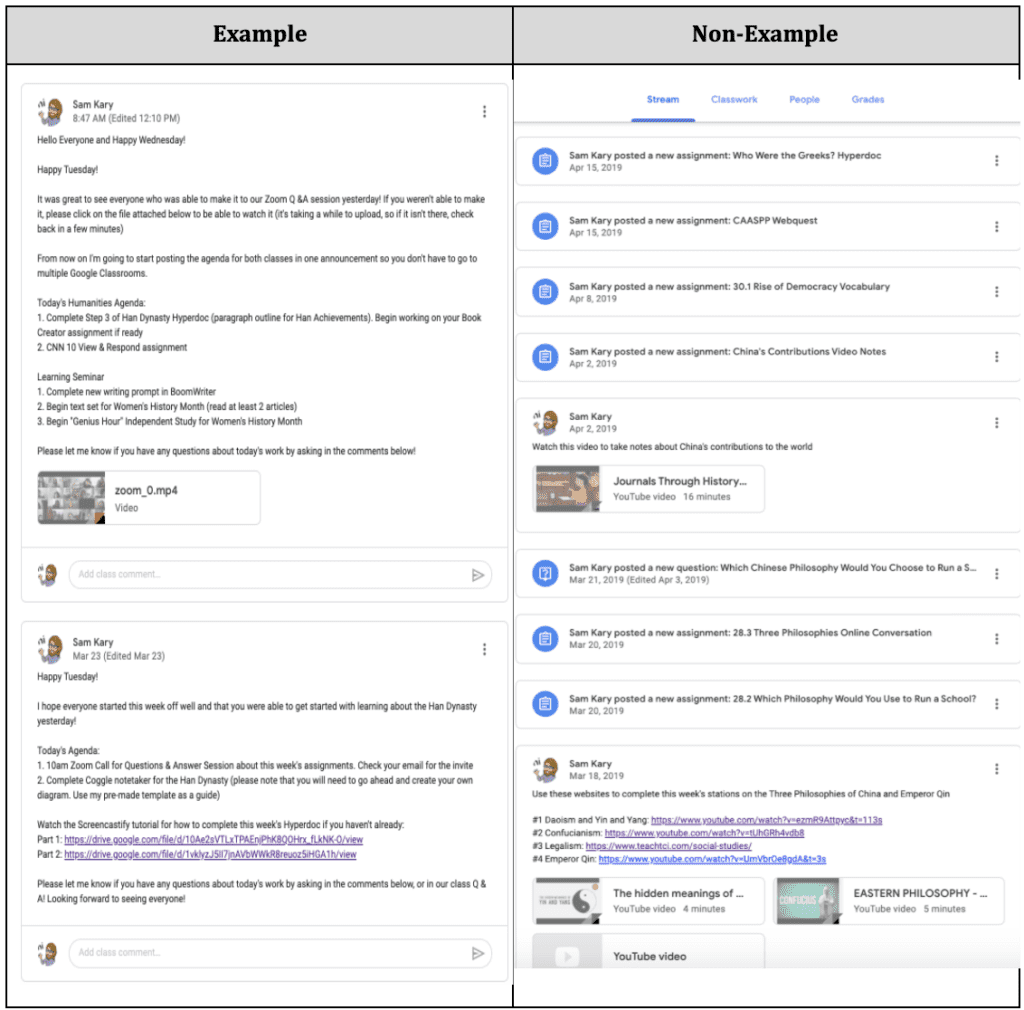
Next, change the Stream setting from “Students Can Post and Comment” to just “Students can Comment,” or “Only Teacher can Post and Comment” to help with Stream organization.
If you don’t change this setting, your Stream will soon fill up with your posts in addition to student posts.

If students have questions or want to post something, they can still do it in the class comments. Be sure to regularly check the comments and delete inappropriate/irrelevant comments and mute students if necessary by clicking on 3 dots and selecting “delete” or “mute student.”

3. Post Daily Announcements for Clear Communication
Once you’ve streamlined your Google Classroom Stream, post daily announcements including a greeting, clear instructions, and potentially a Screencastify video to explain the lesson. Encourage students to ask questions about the day’s assignments in the comments below.
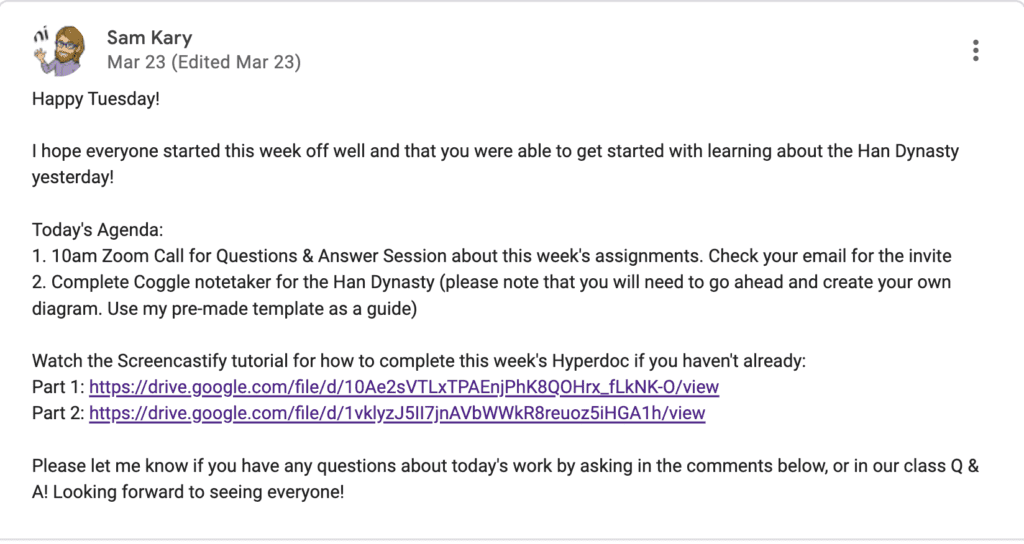
4. Organize Classwork Tab with Topics
Think of Topics as the filing folder system inside of your file cabinets. Using Topics will help subdivide assignments into different categories, making information significantly easier for students to find.
Although I normally use topics like “Homework,” “Classwork,” and “Projects,” for remote teaching, I’m changing my topic names to the weeks we are doing remote teaching in order to help students find assignments for each week (e.g. Remote Learning March 23rd-27th). See example below.
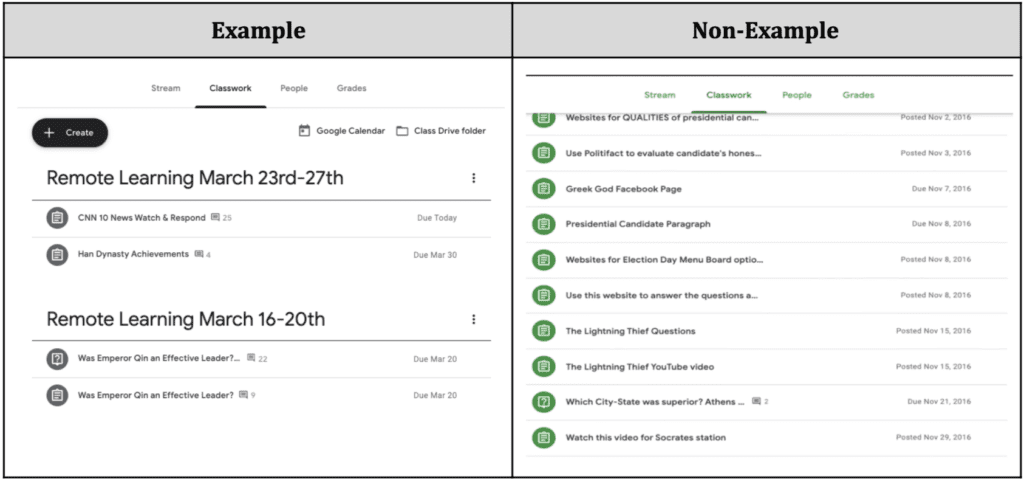
5. Create Self-Contained Assignments with Clear Instructions
Create self-contained assignments in order to minimize the number of places students need to click to access directions, resources, and materials for assignments.
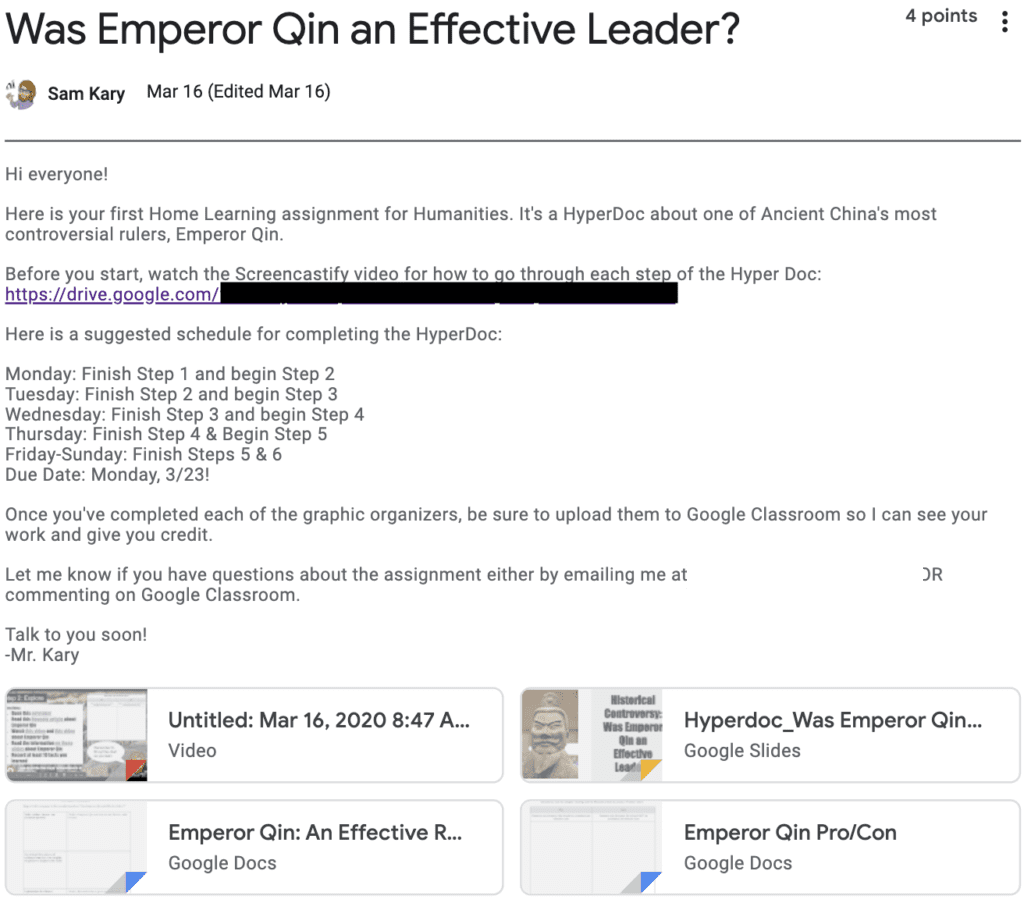
6. Make Individual Copies of Assignments for Students
Change the default assignment setting from “Students Can View” to “Make A Copy for Each Student.” This will automatically create a separate document for each student to edit. Be sure to use documents from your Google Drive in order to use this function.
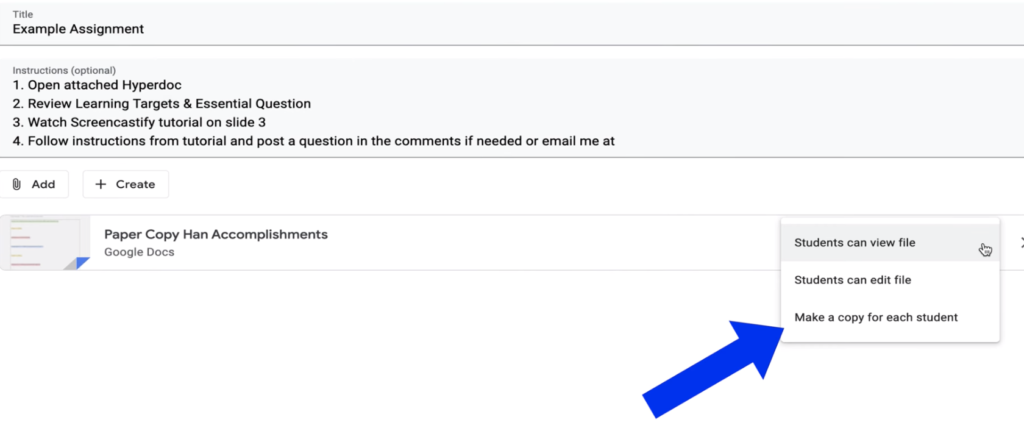
7. Teach Students How to Submit Assignments
Option 1: If you clicked “Make a copy for each student,” students click “Turn In” on their document.

Option 2: If students need to upload their own files, they will click “View Assignment” -> “Add” and then choose the file from their computer or from their Drive folder. If students are uploading documents they have created in external programs (i.e. a graphic design, video, audio file, etc.) they will need to use this option.
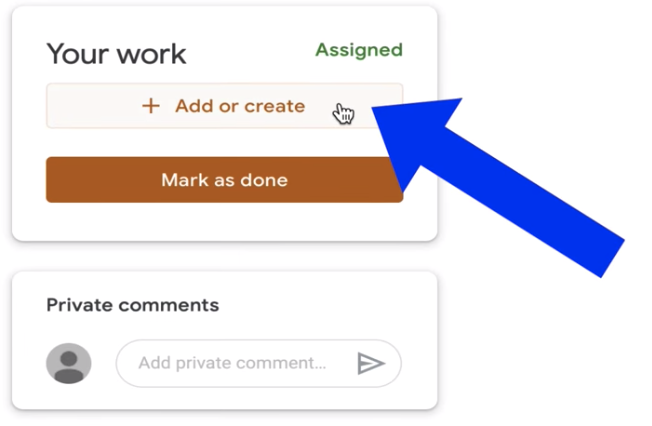
Note that even if students haven’t actually uploaded any work, they can still click “Turn In.” This is useful if students simply want to indicate that they finished an assignment, but you’ll also want to make sure students understand that they need to actually upload the document in order for you to be able to access it.
8. Utilize Questions to Promote Sense of Community
In order to maintain a sense of community during remote learning, it will be important to provide your students with opportunities to converse with one another.
Assigning a Question as an assignment will allow students to respond to a question and then comment on each other’s posts.
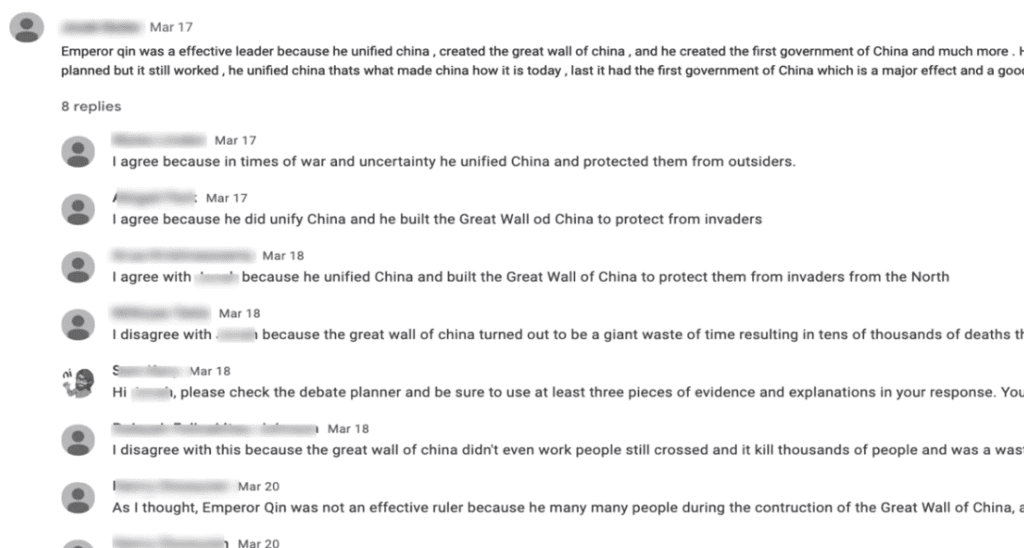
9. Teach Students How to Use Calendar View
Time management is going to be an even greater challenge with remote learning. The embedded Google Calendar view will allow students to see all of their assignments in a monthly or weekly view in order to better understand when work is due.

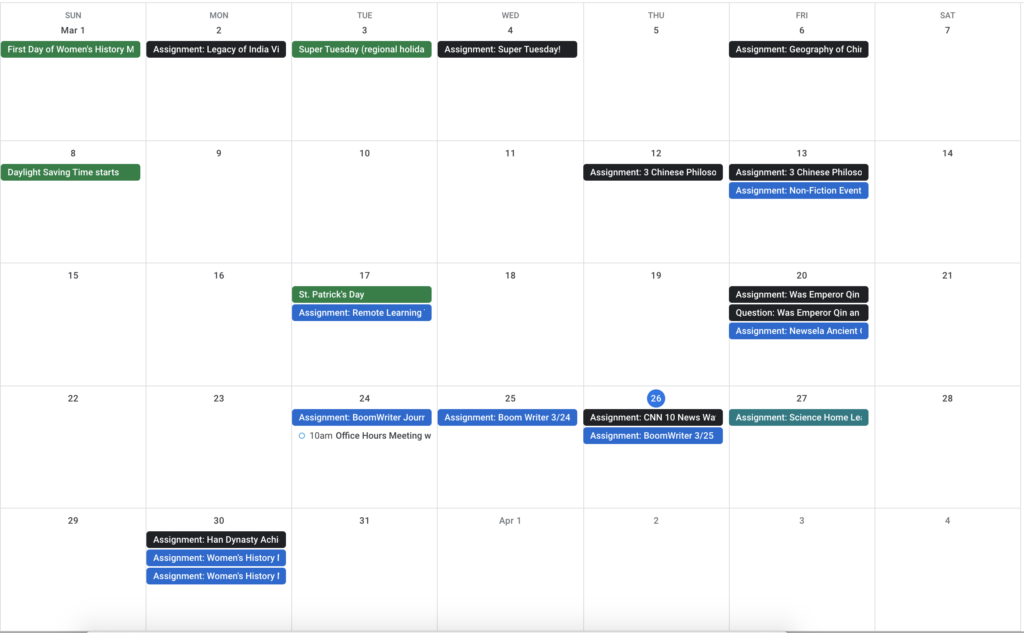
10. Use Guardian Summaries for Family Communication
If you plan to collect all work through Google Classroom, consider using Guardian Summaries.
When you invite parents, they will receive an email asking them if they would like to receive notifications regarding assignment completion. Then, parents can select how frequently they would like to receive notifications regarding everything that has been posted to Google Classroom, including the status of a student’s assignments.

Conclusion
Given that Google Classroom is going to be the central location where students will go in order to find daily announcements and assignments, you’ll want to ensure that your Classroom is as easy to navigate and understand as possible. Taking some time upfront to intentionally set up your organization system and think through how to plan to communicate with students will go a long ways toward ensuring success with remote teaching
For additional strategies for increasing autonomy, creativity, engagement, and academic rigor with technology, click here:
How to Use Education Technology: The Ultimate Guide
And to read more about why I believe technology must be a central part of public education today, click here:
Why Education Technology?: The Ultimate Guide
Interested in the software I use to create my videos? Check out the links below! Many of these products offer a free trial to start and just clicking on the link helps to support The New EdTech Classroom!
Screenflow is a dynamic, intuitive video editing software that I use to create all of my YouTube videos. They’re currently offering a free trial! Get more details here.
I use Adobe Spark Post to design all of my YouTube thumbnails, as well as for my social media graphics. More information here.
If you’re interested in creating a website, these are a couple of programs I personally use and highly recommend: Bluehost is a web host that offers a professional platform for your website. You can check them out here.
Elementor is a powerful tool that helps with clean visual design for your website as well as marketing to further your website’s influence. More details here.

